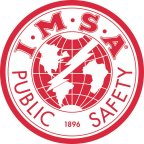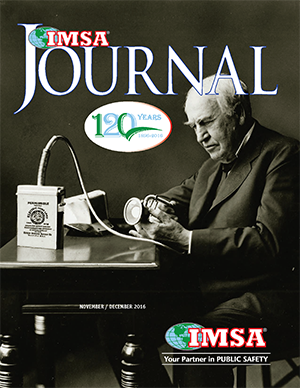
Background
IMSA is the oldest known association of its kind in the world. It dates back to October 1896, when a group of municipal signal men from several east coast cities met in Brooklyn, New York and organized an association called the “International Association of Fire and Police Telegraph Superintendents.” Records indicate that the group met once a year thereafter and that committees were appointed which developed and submitted technical papers on pertinent subjects at these annual meetings.
The basic purpose of the organization was to keep its members and others in the profession, up-to-date on proper procedures of construction and maintenance of signal systems and informed on new products and equipment developments.
In 1900 the organization changed its name to the “International Association of Municipal Electricians” (I.A.M.E.). This name remained for the next 35 years.
 Records show that Thomas A. Edison and the Edison Electric Company were associate members in 1901. During that year the association members began developing standards and specifications for wire, cable, fire alarm boxes, and even the size of manhole covers. Association members were also instrumental in the founding of the Underwriters Laboratory and the National Electrical Manufacturers Association (N.E.M.A.) during this era.
Records show that Thomas A. Edison and the Edison Electric Company were associate members in 1901. During that year the association members began developing standards and specifications for wire, cable, fire alarm boxes, and even the size of manhole covers. Association members were also instrumental in the founding of the Underwriters Laboratory and the National Electrical Manufacturers Association (N.E.M.A.) during this era.
 On August 31, 1913, at 2:00 PM, in Watertown, New York, the very famous Charles Proteus Steinmetz was nominated and elected First Vice-President of the I.A.M.E. He held office until his death on the 26th of October 1923. While I.A.M.E. was developing, other groups of men, in the same or similar fields, were organizing at local or area levels. In 1921, a group of six signal superintendents from the State of Connecticut, who had been meeting socially, decided to organize and meet frequently for the purpose of discussing mutual problems. They called themselves the “Eastern Association of Superintendents of Fire and Police Telegraph.
On August 31, 1913, at 2:00 PM, in Watertown, New York, the very famous Charles Proteus Steinmetz was nominated and elected First Vice-President of the I.A.M.E. He held office until his death on the 26th of October 1923. While I.A.M.E. was developing, other groups of men, in the same or similar fields, were organizing at local or area levels. In 1921, a group of six signal superintendents from the State of Connecticut, who had been meeting socially, decided to organize and meet frequently for the purpose of discussing mutual problems. They called themselves the “Eastern Association of Superintendents of Fire and Police Telegraph.
As this association became better known, attendance at meetings increased and so did membership as signal men from other New England States and from New York and New Jersey joined the organization. In the 1920’s the name was changed to the “New England Municipal Signal Association.”
At about this time, some of the more distant members of the New England Association and other signal men formed groups of their own such as the New Jersey Signal Association, the New York State Municipal Signal Association, the Northwest Municipal Signal Association, and the Southern New York Municipal Signal Association. In the early 1930’s these groups formed the “Associated Municipal Signal Services” (A.M.S.S.), but each group retained its individual identity and continued to conduct its own meetings.